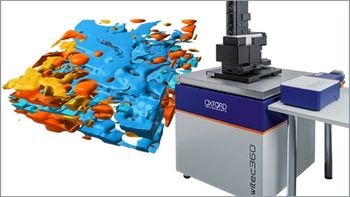
- Spectroscopy-05-01-2014
- Volume 29
- Issue 5
What's New in Testing Pharmaceuticals for Metals: Metals and Limits in Limbo
This article covers the changes so far to United States Pharmacopeia (USP) chapters <232> and <233>, the International Conference on Harmonisation (ICH), the European Medicines Agency (EMA), and the European Pharmacopoeia (EP), impending changes, and options for preparing for those changes.
The requirements for testing of pharmaceutical products for elemental impurities has been in a state of flux for several years. Impending changes to United States Pharmacopeia (USP) chapters <232> and <233>, the International Conference on Harmonisation (ICH), the European Medicines Agency (EMA), and the European Pharmacopoeia (EP) will have a significant impact on the pharmaceutical industry and its suppliers. Until those changes are adopted as official and implemented, it is difficult to know how to plan or proceed in anticipation of what will come. This article covers the changes so far, impending changes, and options for preparing for those changes.
In the past 10 years, the subject of metals analyses in pharmaceuticals has gained considerable interest. The publication of the European Medicines Agency (EMA) "Guideline on the Specification Limits for Residues of Metal Catalysts or Metal Reagents" (1), new United States Pharmacopeia (USP) chapters <232> "Elemental Impurities: Limits" and <233> "Elemental Impurities: Procedures" (2,3), and European Pharmacopoeia (EP) 5.20 (4) have forced the industry to begin looking more carefully at the metals content of various materials used in the manufacture of pharmaceuticals. While there are differences between USP <232> and the EMA and EP documents, they are, none-the-less, significantly harmonized.
Following behind the EMA, USP, and EP, the International Conference on Harmonisation (ICH) recently moved to a step 3 document for Q3D: "Elemental Impurities" (5). ICH-Q3D completed the public comment period on December 31, 2013. ICH-Q3D adds many more elements to the listing of elements of interest, and is not well-harmonized with the USP, EMA, or EP documents. Furthermore, although ICH-Q3D has not yet advanced to step 4, the EMA has indicated that it will harmonize with the ICH document when it is finalized. To that end, the EMA has delayed implementation of the "Guideline on the Specification Limits for Residues of Metal Catalysts or Metal Reagents" for marketed drug products, pending finalization of ICH-Q3D. This will result in significant changes to the EMA and EP documents in the future. Likewise, USP has delayed implementation of chapters <232> and <233> and will revisit <232> once ICH-Q3D is finalized as well, which could also lead to potential changes to <232> in the future.
To say that the status of elemental impurities in pharmaceuticals is in limbo is an understatement. The word limbo has two widely recognized meanings: "an intermediate state or place" (6); and "a West Indian dance where the players keep bending over backward and passing under a pole that is lowered" (6). Both definitions fit the current state of elemental impurities in pharmaceuticals, where compliance requirements are "on hold," and the position of the "bar" keeps changing, causing those analysts who had hoped to be proactive in meeting compliance requirements to, in some instances, totally revisit their approaches to compliance. As a result of the disparity between the various documents — especially, with ICH-Q3D not yet finalized and with no projected implementation date for it, the EMA, or the EP, and with a projected date of December 2015 implementation for the USP —many in the industry are both frustrated and confused as to how to proceed to prepare their companies and products to comply with what certainly promise to be significant changes in the way metals analysis in the pharmaceutical industry is performed. This article will provide some background and suggestions regarding how to prepare for compliance, as well as ways to leverage the documents currently in limbo to save resources.
ICH-Q3D
Coming late to the game behind the EMA, EP, and USP, the ICH began looking at the topic of metals analysis in pharmaceuticals and drafted its first pre-step 2 document, ICH-Q3D, in late 2011. This document included elements that were originally proposed for inclusion in, and subsequently not included in, USP <232>. The Expert Working Group (EWG) indicated a strong desire to achieve step 4 status as quickly as possible, with discussion focusing on mid-2014. A third version of ICH-Q3D was then finalized as a step 2b document in July 2013. ICH-Q3D completed the process where the three regulatory sponsors (the United States, European Union, and Japan) submit the document for their own local comment period. When the document reaches step 4, the guideline is then recommended for adoption by the regulatory bodies in the United States, European Union, and Japan. Those regional authorities then establish implementation time lines and guidelines within their own regions.
Because the ICH-Q3D comment period ended on December 31, 2013, followed by a reconvening of the EWG, meeting, a step 4 deadline of June 1, 2014, is quite an aggressive time line. Even if ICH-Q3D does not achieve step 4 in June 2014, it will be important for pharmaceutical companies to closely monitor the situation with regard to ICH-Q3D both regarding its timing and also its potential impact on the already published, but currently on-hold, EMA, EP, and USP documents.
Current Impact on EMA and EP 5.20
The status of ICH-Q3D has had a significant impact on the EMA and EP documents. The EMA "Guideline on the Specification Limits for Residues of Metal Catalysts or Metal Reagents" became effective on September 1, 2008, for new materials. At that time, the EMA gave a delayed implementation period of five years for "legacy" products, with the guideline implementation date for those being September 1, 2013. The publication of ICH-Q3D has caused a delay in that implementation date for marketed products.
Current Impact on USP Chapters
Chapters <232> and <233>
Even before publication of the step 2b ICH-Q3D document, the status of USP chapters <232> and <233> was in considerable flux since they were first intended to be official on December 1, 2012. In November 2012, the decision was made to delay making them official. They were reinstated as official in February 2013; however, there were still concerns about the implementation date of May 1, 2014, despite the fact that it already represented a delay in the implementation of <232> and <233>. Consequently, in May 2013, the decision was made to further delay implementation. Concurrently with the decision to delay implementation of <232> and <233>, the decision was also made to delay removing chapter <231> "Heavy Metals from the compendia via General Notices." Additionally, the USP subsequently decided to make changes to <232> and <233>, which would become official in August 2015, and implemented in December 2015, along with removal of <231> from the compendia. With the chapters being official, industry is free to use them, however, it is not required that they be used to demonstrate compliance at this time. Chapter <231> may also still be used.
What Are the Differences?
Between the EMA, EP, USP, and ICH, there are major differences between the listing of elements and the compliance limits for each element. USP departed from the EMA and EP by including the "Big 4" (As, Cd, Hg, and Pb), potential inadvertent contaminants. Additionally, USP did not include some of the elements listed in the EMA and EP because the limits for those elements were very high, and failure to comply with those limits would represent a GxP failure first. EMA and EP included categories of elements based on toxicities, whereas only an early version (from 2010) of USP <232> included similar categories of elements. ICH-Q3D is most like the USP's original listing of elements, and includes Co, Se, Tl, Li, Sb, and Sn, which were all included in the very first draft of USP <232>. ICH-Q3D also includes Ag, Au, and Ba, which have never been included in USP <232>. ICH-Q3D also categorizes elements, much like the EMA and EP. Tables I, II, III, and IV provide comparisons between ICH-Q3D, USP <232> and the EMA guideline and EP 5.20.
Table I: The "Big 4" (1,2,4,5) included in risk assessment
How to Plan?
With different lists of elements, different limits, different elemental categories, unknown implementation dates, and the potential for changes in the future, many analysts feel that it is difficult to prepare for anything regarding metals analysis in pharmaceuticals. Analysts are also concerned that, once the landscape becomes clear, time will be short to achieve compliance. Those who were proactive in attempting to comply with USP, EMA, and EP have now had to regroup after having already spent time and money to comply, as USP has delayed implementation of <232> and <233>, and ICH is now looming.
Table II: ICH Class 2A (1,2,4,5)
It is still possible, however, to begin to plan, despite the differences between ICH, USP, EMA, and EP. The EMA and EP have indicated that they will harmonize 100% with the finalized ICH document. It is possible that the current ICH-Q3D document will remain largely unchanged as it moves to step 4. It is also possible that additional changes may be made to the document.
Table III: ICH Class 2B (1,2,4,5)
Although the USP has a strong desire to harmonize wherever possible, 100% harmonization cannot be absolutely assured. While not desirable, it is possible that toxicologists working with the USP will not agree with the ICH regarding the listing of elements or their corresponding limits, or vice versa. Certainly, it is clear that toxicologists are not in agreement regarding elements of potential interest or their limits, or there would not be differences between the ICH, USP, EMA, or EP listings of elements and corresponding limits.
Table IV: ICH Class 3 metals (1,2,4,5)
Options
Wait
One approach to determining how to prepare for compliance with ICH-Q3D, EMA, EP, and USP requirements is to wait. The EMA and EP have already indicated that once it is finalized, they will fully harmonize with ICH-Q3D. Whether the USP harmonizes 100% may or may not happen, but even with the ever-changing landscape it is possible that waiting until everything is finalized, with due dates firmly set in stone, is a valid option for companies. The drawback to waiting is that, depending on time lines and the number of materials a company may have to evaluate, they may be rushed to accomplish the full assessments in whatever time is finally allotted before implementation of ICH, EMA, EP, and USP requirements. The advantage of waiting is that all requirements and deadlines will be known.
Proceed — with Caution
For companies with a large number of materials to assess, or for those who wish to proceed for other reasons, it is still possible to begin to prepare for compliance, despite the fact that the requirements are in a state of flux. It is unlikely that the listing of elements and limits in ICH-Q3D will change, but changes are possible. It is also possible that the USP will change. It is most likely that USP, EMA, and EP will harmonize either fully or in part with ICH-Q3D. If total harmonization is not achieved, it will likely be the result of differences in regional acceptance of limits. Should limits for a given element diverge, the simplest option is to work with the lower of the two limits. In that way, compliance with the lowest limit ensures compliance with the highest, as well. Should the listing of elements of interest differ between ICH-Q3D and USP, companies can choose to assess the combined listing of elements, or they may use the risk-based approach to rule out some elements completely. By using a combined listing of elements and the lowest of limits between the various listings, companies can then begin to prepare to meet compliance requirements before deadlines are established. With this in mind, a conservative approach to developing a plan in advance of finalization of ICH, USP, EMA, and EP would be to adopt the required elements from each listing, and adopt the lowest limits for all analytes. Consequently, the listing of elements and limits might look something like that found in Table V.
Table V: Hypothetical listing of elements and limits (2,5)
Risk-Based Approach
Armed now with a listing of elements and limits, it is possible to begin to prepare for compliance with unharmonized documents — especially when the concept of a risk-based approach is encouraged by all parties. First and foremost, it is absolutely essential that a company have a thorough understanding of their product's process, suppliers processes, raw materials, and equipment being used. A sound risk-based approach that will comply with all guidelines and compendia simultaneously must be based on full knowledge of the process by which a drug is manufactured. Vendor qualifications; understanding of how raw materials, intermediates, and excipients are made or derived; and knowledge of whether any materials included in the drug product are naturally sourced or plant-based are all critical in determining which elements must be monitored. A careful evaluation of that information can help to narrow the listing of analytes to a more manageable one than that provided in Table V. Figure 1 provides an example on how to determine if a metal (other than one of the big 4 or the ICH mandatory metals) must be monitored or not.
Figure 1: Sample flowchart for assessing the need to test.
What About As, Cd, Mo, Pb, Hg, Se, V, and Co?
There is considerable confusion regarding the requirements to test for As, Cd, Pb, and Hg to comply with the USP, and there will undoubtedly be some confusion regarding the ICH requirements to test for As, Cd, Pb, Hg, Se, Co, V, and Mo. Many believe that testing for these elements in every material (drug product or components) is mandatory for every batch. Although that certainly is one approach to meeting the requirements and demonstrating compliance, it is generally not considered the most effective use of a risk-based approach. While it is necessary to make certain that none of those elements is present at levels exceeding their limits for both the USP and the ICH, it is also important to realize that a risk-based approach has the potential to minimize or eliminate testing for some or all of those elements in any given product or component. Although the ICH requires that these elements be included in a risk assessment, it is important to note that the ICH does not require that these elements, necessarily, be included in all analyses. The risk assessment is part of a risk-based approach. For example, if a component is a mined material or if a drug product contains a mined material, a risk-based approach might require the testing for some or all of those elements. Mined materials may vary considerably from batch to batch, given the fact that different locations in mines may have varying concentrations of potential elements of interest. On the other hand, if the material is not mined it may not be necessary to test every batch for those elements. The decision regarding whether or not to test for those elements must be based on a thorough knowledge of the entire process and sourced materials. Lacking that knowledge, testing is the safest way to ensure compliance.
It may also be possible to use skip-lot testing or eliminate the need for testing if results for pilot scale or production scale batches demonstrate that a metal does not exceed 30% of the guideline limit. The decision on eliminating elements or performing skip-lot testing is something each company will have to carefully consider and assess within the context of the company's policies and procedures, as well as the level of acceptable risk a company is willing to assume.
It must be said that although risk-based approaches are highly encouraged by the USP, EMA, EP, and ICH, it remains to be seen how regulatory agencies will respond to using a risk-based strategy for metals testing. For this reason, it is important for a manufacturer to work closely with local authorities to ensure that whatever approach is taken is acceptable.
Analytical Implications and Approaches
USP chapter <233> may be used for the analytical procedure for the determination of elemental impurities in pharmaceuticals. The ICH, EMA, and EP do not specify an analytical procedure, so <233> would be appropriate for those organizations, as well as USP. In deciding how to develop the method, it is important to first determine if the drug product will be analyzed or if components of the drug product will be analyzed. Either practice is acceptable for USP, ICH, EMA, or EP. After that decision is made, it is then necessary to determine if the maximum daily dosage is different than 10 g/day, and if so, what impact that might have on the limits for each analyte of interest. Using the following calculation, analysts may determine their analytical target range for a given analyte:
Concentration (ppm) = PDE/daily dose [1]
where PDE is the permitted daily exposure from the EMA guideline shown in Table I, and is in micrograms per day; and daily dose is the maximum daily dosage, and is in grams per day. The maximum daily dosage can have a significant impact on the final compliance limits. Table VI illustrates the impact of a few different maximum daily dosages on limits for a few selected analytes.
Table VI: Impact of maximum daily dosages
Clearly, the selection of the analytical technique to be used for the analyses may be impacted by the maximum daily dosage. Although inductively coupled plasma–optical emission spectrometry (ICP-OES) and inductively coupled plasma–mass spectrometry (ICP-MS) are the methods of choice listed in USP <233>, analysts may use any other technique that meets the validation requirements of that chapter. Consequently, depending on the maximum daily dosage, analysts may not need the sensitivity that ICP-MS, or even ICP-OES, affords.
In following USP <233>, it is important for the analyst to remember some general guidelines:
- J = the term used to represent the concentration (by weight) of any element of interest at the target limit for that element. It may be necessary to dilute to the working range of the instrument being used for the analysis.
- Target limit (or target concentration): This is the value used, for any elemental impurity under evaluation, that provides the acceptance value for that elemental impurity.
- When using direct dilution of a sample, it is important to be certain that the elements in question are fully soluble in that solvent. If this is not the case, then microwave digestion may be required.
- Alternate procedures may be used, provided they meet the requirements of the USP General Notices and the validation of requirements of USP <1225>. In instances where USP <1225> differs from the validation requirements of <233>, the validation requirements of <233> take precedence.
- Requirements in a monograph trump the requirements in USP <232>, which provides the basis for limits being tested via USP <233>.
- Techniques other than ICP-OES or ICP-MS may be used, provided they meet the requirements (specified above).
- Spiking of samples must be performed before any other sample preparation steps.
- Speciation is not required.
- Liquid samples must be weighed.
Leverage the Capabilities of Modern Instrumentation
For analysts who choose to perform analyses using instrumental methods such as ICP-OES or ICP-MS, it is possible to perform screening analyses of samples using the scanning features of those instruments. Generally, such results are qualitative in nature, but can reveal the presence of unexpected metals in samples. Should an unexpected metal be present in a sample, then, depending on what it is, analysts may determine if there is a need to evaluate it further or whether it is of no concern.
Conclusion
Although the subject of metals analysis in pharmaceuticals is a topic of considerable interest, the various lists of elements and limits, and undetermined implementation dates has left the industry in a quandary as to what to do and how to proceed. It is possible to take a "wait and see" approach, moving forward only when all issues are completely resolved. However, for those who wish to begin to prepare for compliance, there are still ways to accomplish this. The key to any program to ensure compliance is flexibility and a complete understanding of the process by which a product is made. Careful planning and preparation, as well as being aware of the procedural processes currently under review, can enable companies to conserve resources while still preparing for compliance with new requirements for metals analyses in pharmaceuticals.
References
(1) European Medicines Agency, Guideline on the Specification Limits for Residues of Metal Catalysts or Metal Reagents, (EMA, London, England, 2008).
(2) General Chapter <232> "Elemental Impurities: Limits" proposed for United States Pharmacopeia 35–National Formulary 30 (United States Pharmacopeial Convention, Rockville, Maryland).
(3) General Chapter <233> "Elemental Impurities: Procedures" proposed for United States Pharmacopeia 35–National Formulary 30 (United States Pharmacopeial Convention, Rockville, Maryland).
(4) General Text 5.2.0, "Metal Catalysts or Metal Residues" European Pharmacopoeia (European Directorate for the Quality of Medicines, Strasbourg, France, 2012), p. 5285.
(5) International Conference on Harmonisation, Q3D, Elemental Impurities (ICH, Geneva, Switzerland). Retrieved September 13, 2013, from:
(6)
Nancy Lewen is senior principal scientist for analytical and bioanalytical development at Bristol-Myers Squibb in New Brunswick, New Jersey. Direct correspondence to:
Articles in this issue
over 11 years ago
Appendix I: Accessoriesover 11 years ago
Appendix IV: Mass spectrometryover 11 years ago
Appendix III: Componentsover 11 years ago
Appendix VI: NIRover 11 years ago
2014 Review of Spectroscopic Instrumentation Presented at Pittconover 11 years ago
Appendix X: Terahertzover 11 years ago
Appendix IX: Softwareover 11 years ago
Appendix XI: UV–visover 11 years ago
Appendix VIII: RamanNewsletter
Get essential updates on the latest spectroscopy technologies, regulatory standards, and best practices—subscribe today to Spectroscopy.




